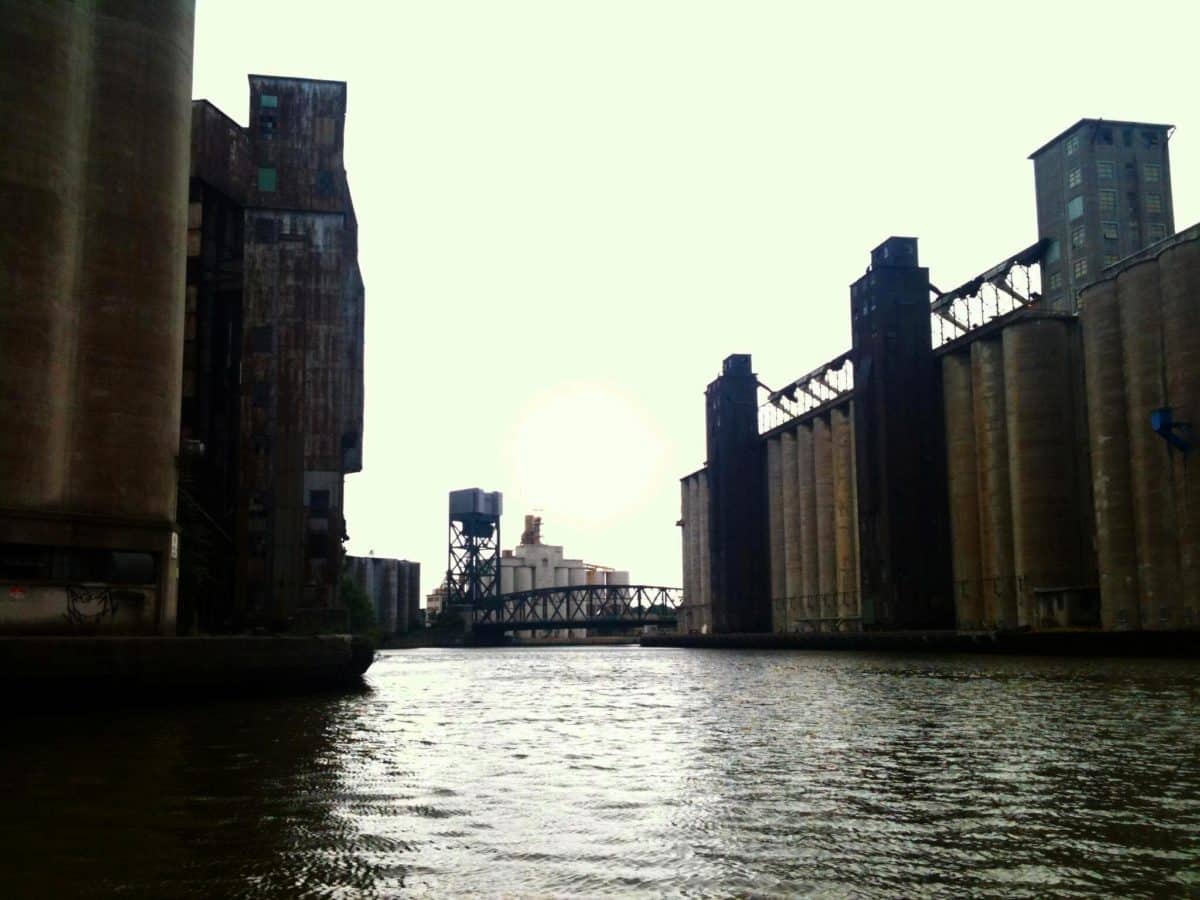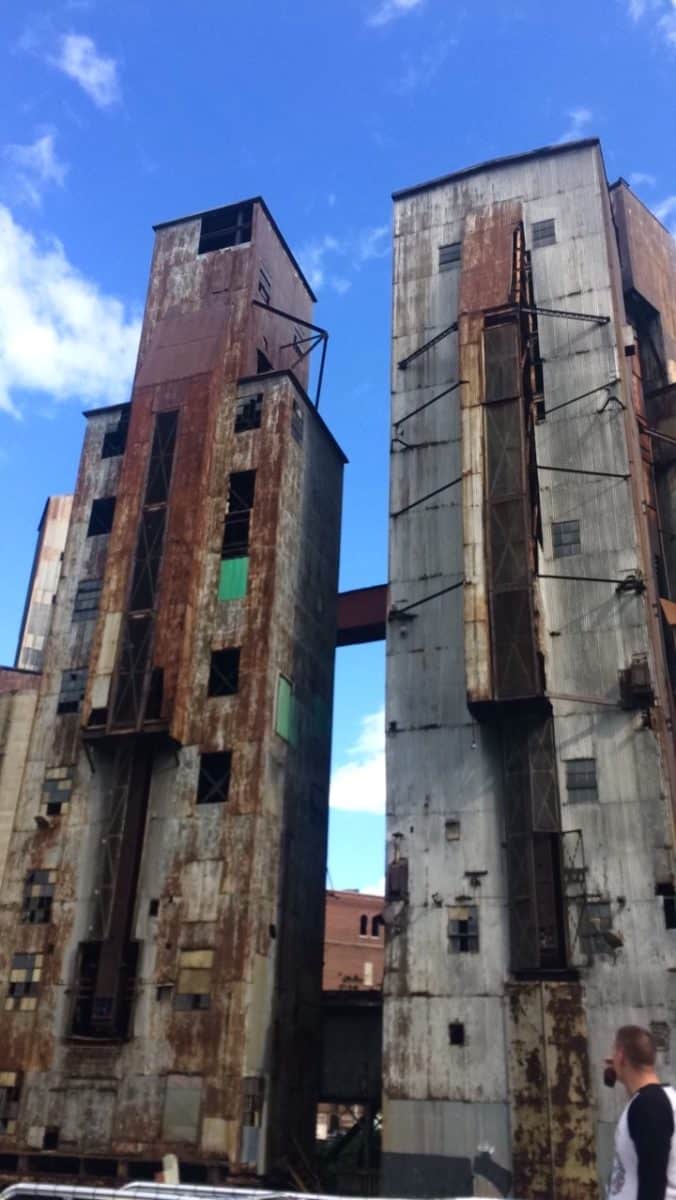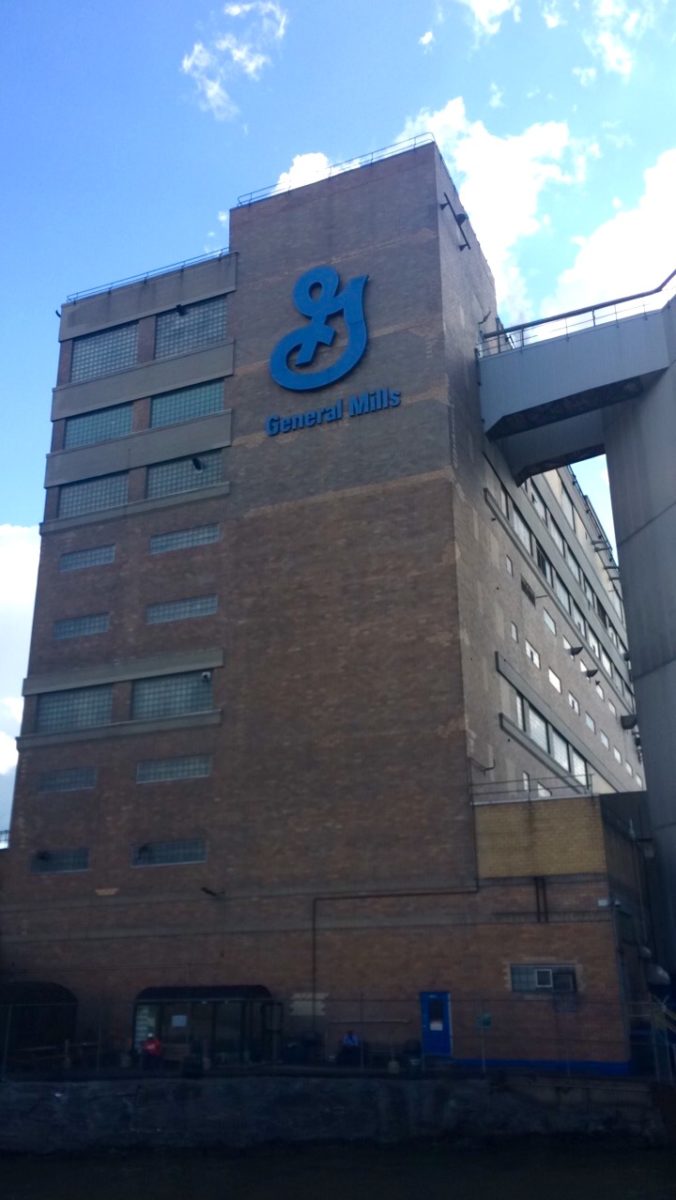Any historian would tell you how difficult it was to have basic staples at home before the 1800s. There were no retail grocery stores with international foods from other continents, or even from other states. These were the true farmers’ markets, where the only food available was local. While the population in the northeast was growing, it wasn’t exactly a land known for fertile soil and abundant grains; that’s what the Midwest was for. In order to get the crops from the Midwest to the East Coast, settlers had to get creative. This led to the transformation of Buffalo from a small town by the lake to the grand western terminus for the east.
If you wander Canalside, a lively and historic district in Buffalo, New York, you may run into Mike Casella, Director of Tours at Buffalo River History Tours. During the warmer months you can cruise the waters and listen to him explain the fascinating history of the grain elevators that remain as a memento of the industrial past.
“The [Buffalo River History Tours] company is owned by the Hilliman family. I’ve been friends with Ric and Kathy Hilliman since we were teens,” says Mike. People kept asking Mike and Ric how the grain elevators got to where they are, and since Ric used to use the water taxi he decided to put the tour together. The business flourished and Rich, Ric and Kathy’s son, later became a partner. Mike has retired after working at General Motors for many years and now dedicates his time to talking about Buffalonian culture and history.
Before Buffalo became the western terminus, grains from the Midwest took quite a detour to get to where they needed to go.
“They would ship product down the Mississippi River and sell it in New Orleans. It would then be transferred to seafaring vessels and travel along the Gulf Coast, make its way around Florida, and finally make it to New York and Boston ports. The journey would usually take two to four months, and hurricanes or extreme weather would ruin the grains,” says Mike.

“The Appalachian Mountains caused the main problem for getting product from the middle of the U.S. to the East Coast.” Clearly the farmers and northerners were in need of a better solution to transport the grains. Thankfully, a flour merchant named Jesse Hawley came up with a solution.
Hawley had trouble finding cheap modes of transportation for his grain, so he was sent to debtors’ prison. During his time there, he had the chance to write essays about a canal that would connect the Hudson River with the Great Lakes. These essays drew the attention of Dewitt Clinton, who later went to Washington to speak with Jefferson about receiving some funding. Jefferson replied that Clinton was “about 100 years early” and dismissed his request for federal funding. When Clinton returned to New York he gained support for the canal and became governor, turning Buffalo into the great western terminus.
At its peak time, there were 48 grain elevators working in Buffalo. Sixty percent of the grain in Buffalo was wheat, while remaining product consisted of barley, rye, and oats. The largest grain elevator in the world at the time was Concrete Central.

“It was the largest grain elevator in the world, built between 1915 and 1917. It had 268 silos and would hold 4.5 million bushels of grain, which is estimated to make 170 million loaves of bread. At the time, there were 103 million people in the U.S.” Having so much grain in one place could be risky during war times; should the enemy find out where the majority of grain resided, it would be easy enough to wipe out supplies with a simple maneuver. Therefore, it was built in secret. “We were starting to get involved in World World I, so [Concrete Central] was protected by the military in both wars.” The fact that the majority of grain was stored in one area is incredible, and it was easy to see how Buffalo became such a bustling, industrial hub for this simple staple.


Today, there are just fourteen grain elevators left standing, and only four are actually in use. Most grain from the Midwest now moves through the Saint Lawrence Seaway, taking the spotlight and industrial status away from the Port of Buffalo. While the grain elevators stand as relics of the past, they also stand with new hopes for the future. Restaurants, apartments, and businesses are gradually moving into the area as it is being refurbished into a modern, recreational space. Receptions, concerts, and ziplining can be held in a grain elevator, and a few silos have been transformed into what looks like an enormous six-pack of Labatt Blue. Organizations are trying to bring life back to the Buffalo River by stocking fish and cleaning the environment. Boat rides and tours are becoming more popular, and when you cruise along the Buffalo River you can smell the toasted, sweet scent of Cheerios and Lucky Charms emitting from General Mills’ grain elevator.



“To see all the activity come to Canalside after seeing it evolve from industrial to recreational, seeing all the kayaks and concerts and fireworks, it amazes me.” ![]()

